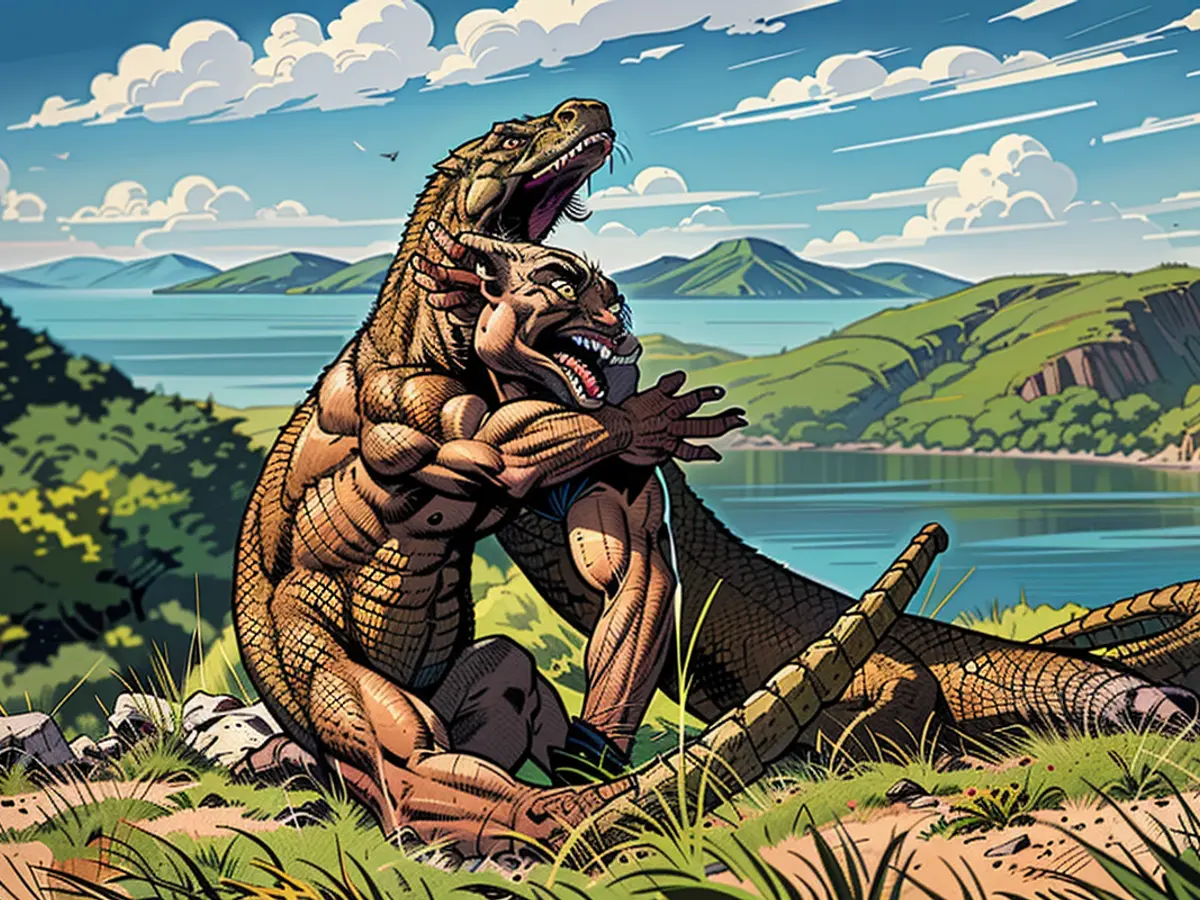Connection to dinosaurs? - The teeth of Komodowaranans are coated with iron
With the discovery of British scientists, the expression "razor-sharp teeth" takes on a whole new meaning. It seems that iron teeth are more of an idea from comic book authors than an evolutionary strategy. However, they have been found nonetheless. Currently in Komodowaranas.
Scientists from King's College London have shown that iron is concentrated along the edges and tips of Komodowaranas' teeth. According to the study that appeared in the journal "Nature Ecology & Evolution" on a Wednesday, this observation from the researchers could also provide clues as to how, for example, the T-Rex may have butchered its prey.
Did the T-Rex have iron on its teeth?
The Komodowaranas, which are indigenous to Indonesia, are the largest living lizard species, with an average weight of about 80 kilograms. As deadly predators, they eat almost every type of meat, from smaller reptiles and birds to deer, horses, or water buffaloes. Humans are occasionally attacked by them as well. "Komodowaranas have curved, serrated teeth, with which they tear apart their prey, just like the flesh-eating Dinosaurians. We want to use this similarity to find out how carnivorous dinosaurs could have fed themselves and if they used iron in their teeth in the same way as the Komodowaran", says Aaron LeBlanc, lecturer in dental biology at King's College London and the study's main author.
To understand the chemical and structural makeup of Komodowaranas' teeth, researchers searched museums for Komodowaran skulls and teeth and analyzed the teeth of Ganas, a 15-year-old Komodowaran that lived at the ZSL Conservation Zoo in the London Zoo, using imaging techniques and chemical analyses. With this help, they were able to analyze the iron oxide protective layer on the tooth edges and tips.
Researchers have not been able to determine the chemical composition of dinosaur teeth so far. "Unfortunately, with the technology we have available, we cannot determine whether fossilized dinosaur teeth had a high iron content or not. We believe that the chemical changes that occur during the fossilization process obscure the original iron content", says LeBlanc.
Further analyses of Komodo teeth could potentially reveal other markers in the iron coating that do not change during fossilization. "With such markers, we would definitely know if dinosaurs had iron-coated teeth, and we could better understand these wild predators", the scientist believes.
Surprisingly thin enamel on the teeth of meat-eating dinosaurs
Thomas Tütken, paleontologist at Johannes Gutenberg University Mainz, also finds this plausible. "For our chemical analyses of dinosaur teeth, we use, among other things, laser ablation", says Tütken. By shooting a laser at a dinosaur tooth, one can determine the concentration of individual elements that make up the tooth enamel, as well as their spatial distribution.
One expert finds it not implausible that one encounters iron in the process. Regarding dinosaur tooth enamel, it is important to note that additional iron deposits can occur during tooth fossilization after death. Tütken states, "We know, however, that flesh-eating dinosaurs have a much thinner layer of hard tooth enamel than herbivores." This may seem illogical, as a carnivorous dinosaur like a T-Rex, which also crushes bones, would require sharp and stable teeth. However, factors other than sharpness and hardness of the teeth also play a role, such as the internal structure of the tooth crown made of enamel: "The spatial arrangement and size of tooth enamel crystals determine the stability of the tooth enamel," Tütken explains.
Not only Komodowarans have hard teeth
However, the mineralization grade of tooth enamel and the type of biominerals in tooth enamel, which typically consists of about 96% of the calcium phosphate mineral Hydroxylapatite, also play a role. The deposition of additional substances like iron oxides during tooth formation could have led to increased strength and wear resistance.
This is supported by the fact that not only Komodowarans have hard teeth. For instance, a yellow-orange shining iron oxide compound covers the cutting edges of a beaver's incisors. And certain mouse species have red-colored teeth due to iron compounds. "The harder iron oxide-containing tooth enamel layer of rodent incisors results in an automatic sharpening of the cutting edges of the teeth," Tütken explains. "Humans have taken note of this in the field of biomimicry and use this principle for the construction of self-sharpening knives and tools." Whether dinosaurs also benefited from this remains to be seen.
The study on Komodowaranas' teeth might provide insights into the feeding strategies of carnivorous dinosaurs, such as the Tyrannosaurus Rex, given their similarities in tooth structure. Despite not being able to determine the iron content in dinosaur teeth due to fossilization, researchers are exploring potential markers in Komodo teeth that could indicate iron-coated teeth in dinosaurs, providing clues to better understand these ancient predators.







